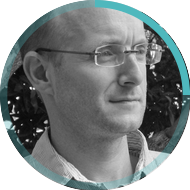Ordinary people had decided they were no longer willing to be forced to venerate a slave trader, one of the most conspicious criminals of Britain's colonial past. Even if briefly, the people of Bristol took back control of their city's public space for themselves, and for humanity.
In doing so, they firmly thrust Britain's sordid past - the unexamined background to most of our lives - into the light of day. It is because of their defiance that buildings and institutions that for centuries bore Colston's name as a badge of honour are finally being forced to confront that past and make amends.
Bath, of course, was built no less on the profits of the slave trade. When visitors come to Bath simply to admire its grand Georgian architecture, its Royal Crescent, we assent - if only through ignorance - to the crimes that paid for all that splendour.
Weeks after the Colston statue was toppled, Bristol made headlines again. Crowds protested efforts to transfer yet more powers to the police to curb our already savagely diminished right to protest - the most fundamental of all democratic rights. Bristol made more noise against that bill than possibly anywhere else in the UK.
I ended up writing about both events from Nazareth.
Blind to history
Since my arrival, old and new friends alike have started to educate me about Bristol. Early on I attended a slavery tour in the city centre - one that connected those historic crimes with the current troubles faced by asylum seekers in Bristol, even as Bristol lays claim to the title of "city of sanctuary".
For once I was being guided rather than the guide, the pupil rather than the teacher - so long my role on those tours in and around Nazareth. And I could not but help notice, as we wandered through Bristol's streets, echoes of my own tours.
Over the years I have taken many hundeds of groups around the ruins of Saffuriya, one of the largest of the Palestinian villages destroyed by Israel in its ethnic cleansing campaign of 1948, the Nakba or Catastrophe.
What disturbed me most in Saffuriya was how blind its new inhabitants were to the very recent history of the place they call home.
New Jewish immigrants were moved on to the lands of Saffuriya weeks after the Israeli army destroyed the village and chased out the native Palestinian population at gunpoint. A new community built in its place was given a similar Hebrew name, Tzipori. These events were repeated across historic Palestine. Hundreds of villages were razed, and 80 per cent of the Palestinian population were expelled from what became the new state of Israel.
Troubling clues
Even today, evidence of the crimes committed in the name of these newcomers is visible everywhere. The hillsides are littered with the rubble of the hundreds of Palestinian homes that were levelled by the new Israeli army to stop their residents from returning. And there are neglected grave-stones all around - pointers to the community that was disappeared.
And yet almost no one in Jewish Tzipori asks questions about the remnants of Palestinian Saffuriya, about these clues to a troubling past. Brainwashed by reassuring state narratives, they have averted their gaze for fear of what might become visible if they looked any closer.
Next Page 1 | 2 | 3 | 4 | 5 | 6 | 7
(Note: You can view every article as one long page if you sign up as an Advocate Member, or higher).





